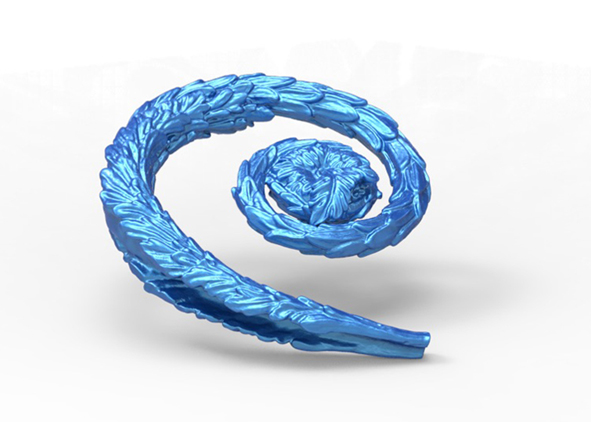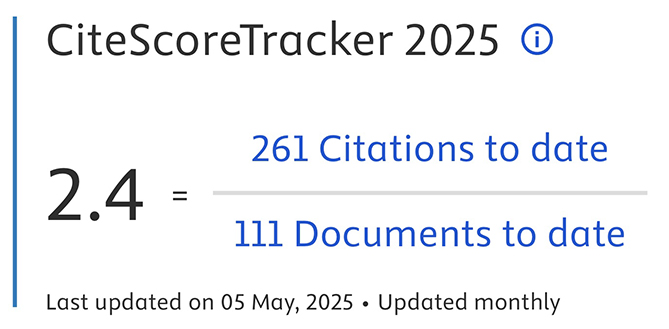L'archivio digitale per i processi di alto artigianato. Ricerche a confronto in Italia e Cina
DOI:
https://doi.org/10.19229/2464-9309/12232022Parole chiave:
processi di digitalizzazione, archivi digitali, cluster manifatturieri, processi produttivi, patrimonio immaterialeAbstract
Il contributo affronta la digitalizzazione del Patrimonio Intangibile custodito dai processi artigianali tradizionali dei distretti manifatturieri delle PMI tramite un confronto di due casi di studio. Due distinti territori produttivi – mobili e complementi in Toscana (Italia) e argenteria Miao nella Provincia di Guizhou (Cina) – sono indagati in termini di caratteristiche, strutture e capacità di accesso all’innovazione tecnologica. Dall’analisi emerge un ruolo privilegiato dell’archivio digitale, come catalizzatore di processi creativi e organizzativi, poiché da un lato favorisce la costruzione di una memoria organizzata e trasmissibile che supporta le PMI nella competitività dei mercati, dall’altro funge da base per lo sviluppo di processi di user-experience mirati alla divulgazione e al reinserimento nel contesto del design contemporaneo.
Downloads
##plugins.generic.articleMetricsGraph.articlePageHeading##
Riferimenti bibliografici
Becattini, G. (2004), Industrial districts – A new approach to industrial change, Edward Elgar Publishing, Cheltenham (UK).
Blumenfield, T. and Silverman, H. (eds) (2013), Cultural Heritage Politics in China, Springer, New York. [Online] Available at: doi.org/10.4000/chinaperspectives.6546 [Accessed 08 October 2022].
Brozzi, R., D’Amico, R. D., Pasetti Monizza, G., Marcher, C., Riedl, M. and Matt, D. (2018), “Design of Self-assessment Tools to measure industry 4.0 readiness – A methodological approach for craftsmanship SMEs”, in Chiabert, P., Bouras, A., Noël, F. and Ríos, J. (eds), Product Lifecycle Management to Support Industry 4.0, PLM 2018 IFIP Advances in Information and Communication Technology, Springer, Cham, pp. 566-578. [Online] Available at: doi.org/10.1007/978-3-030-01614-2_52 [Accessed 08 October 2022].
Celaschi, F. (2017), “Advanced design-driven approaches for an Industry 4.0 framework – The human-centred dimension of the digital industrial revolution”, in Strategic Design Research Journal, vol. 10, issue 2, pp. 97-104. [Online] Available at: revistas.unisinos.br/index.php/sdrj/article/view/sdrj.2017.102.02 [Accessed 08 October 2022].
Chaochan, C. (2018), “Research on the Status Quo and Inheritance of Gold and Silver Fine Work”, in Grand View of Fine Arts, vol. 9, pp. 72-73. [Online] Available at: zhangqiaokeyan.com/academic-journal-cn_art-panorama_thesis/0201245768699.html [Accessed 08 October 2022].
Epifani, S. (2020) Sostenibilità digitale – Perché la sostenibilità non può fare a meno della trasformazione digitale, Digital Transformation Institute.
European Commission (2021a), Creative Europe 2021-2027 – The EU Programme supporting the cultural and creative sectors, Publications Office. [Online] Available at: data.europa.eu/doi/10.2766/6289 [Accessed 10 October 2022]
European Commission (2021b), Communication from the Commission to the European Parliament, the European Council, the Council, the European Economic and Social Committee and the Committee of the Regions – A New European Bauhaus – Beautiful, Sustainable, Together, document 52021DC0573, 573 final. [Online] Available at: eur-lex.europa.eu/legal-content/EN/TXT/?uri=COM%3A2021%3A573%3AFIN [Accessed 10 October 2022].
European Commission (2018), Communication from the Commission to the European Parliament, the European Council, the Council, the European Economic and Social Committee and the Committee of the Regions – A New European Agenda for Culture, document 52018DC0267, 267 final. [Online] Available at: eur-lex.europa.eu/legal-content/EN/TXT/?uri=COM:2018:267:FIN [Accessed 10 October 2022].
European Commission (2019), Communication from the Commission to the European Parliament, the European Council, the Council, the European Economic and Social Committee and the Committee of the Regions – The European Green Deal, document 52019DC0640, 640 final. [Online] Available at: eur-lex.europa.eu/legal-content/EN/TXT/?qid=1576150542719&uri=COM%3A2019%3A640%3AFIN [Accessed 10 October 2022]
Floridi, L. (2020), Pensare l’Infosfera – La filosofia come design concettuale, Raffaello Cortina Editore, Milano.
Fondazione Symbola (2021), Io sono Cultura 2021 – L’Italia della qualità e della bellezza sfida la crisi. [Online] Available at: symbola.net/ricerca/io-sono-cultura-2021/ [Accessed 08 October 2022].
Fry, A., Goretti, G., Ladhib, S., Cianfanelli, E. and Overby, C. (2017), “Advanced Craft, integrated with the Saper Fare – The role of Intangible value, and the centrality of the artisan in high-quality 21st century artisanship”, in Cuadernos del Centro de Estudios en Diseño y Comunicación, vol. 18, issue 64, pp. 255-276. [Online] Available at: dialnet.unirioja.es/servlet/articulo?codigo=7325457 [Accessed 08 October 2022].
Giannachi, G. (2016), Archive everything – Mapping the everyday, MIT Press, Cambridge (MA).
Gilliland, A. J., Lau, A. J. and McKemmish, S. (2021), “Pluralizing the archive”, in Fujiyoshi, K. (ed.), Archives for Maintaining Community and Society in the Digital Age, Springer, Singapore, pp. 61-70. [Online] Available at: doi.org/10.1007/978-981-15-8514-2_7 [Accessed 08 October 2022].
Goretti, G. (2022), “Mediatization in Fashion – A Focus on the Rise of Reflective Emotions within China’s Fashion Ecosystem”, in Chrétien-Ichikawa, S. and Pawlik, K. (eds), Creative Industries and Digital Transformation in China, Palgrave Macmillian, London, pp. 83-185. [Online] Available at: doi.org/10.1007/978-981-19-3049-2_5 [Accessed 08 October 2022].
Goretti, G. (2017), Advanced craftmanship – Maestria avanzata – Percorsi di progetto tra innovazione e tradizione artigianale nei sistemi manifatturieri toscani, Aracne, Roma.
Harrison, R., DeSilvey, C., Holtorf, C., Macdonald, S., Bartolini, N., Breithoff, E., Fredheim, H., Lyons, A., May, S., Morgan, J. and Penrose, S. (2020), Heritage futures – Comparative approaches to natural and cultural heritage practices, UCL Press, London. [Online] Available at: library.oapen.org/handle/20.500.12657/51792 [Accessed 08 October 2022].
Lei, S., Li, L., Longhua, Y. and Hualiang, X. (2017), “Application Research of AR Technology in Digital Protection of Traditional Miao Silver Jewelry”, in Shandong Industrial Technology, issue 17, pp. 254-255. [Online] Available at: caod.oriprobe.com/articles/52691662/ar_ji_shu_zai_chuan_tong_ miao_zu_yin_shi_shu_zi_hu.htm [Accessed 08 October 2022].
Lupo, E. (2019), “Design e Cultural driven innovation”, in i+ Diseño | Revista científico-académica internacional de innovación, investigación y desarrollo en Diseño, vol. 14, pp. 120-132. [Online] Available at: doi.org/10.24310/Idiseno.2019.v14i0.7085 [Accessed 08 October 2022].
Matarazzo, M., Penco, L., Profumo, G. and Quaglia, R. (2021), “Digital transformation and customer value creation in Made in Italy SMEs – A dynamic capabilities perspective”, in Journal of Business Research, vol. 123, pp. 642-656. [Online] Available at: doi.org/10.1016/j.jbusres.2020.10.033 [Accessed 08 October 2022].
Mazur-Włodarczyk, K. (2021), “The social aspect of Chinese crafts”, in Vaňková, I. (ed.), Proceedings of the 14th International Scientific Conference Public Economics and Administration 2021, Technical University of Ostrava, VSB, Ostrava, pp. 293-303. [Online] Available at: researchgate.net/publication/356694099_The_social_aspect_of_Chinese_crafts [Accessed 08 October 2022].
Morace, F. and Lanzone, G. (2010), Verità e bellezza – Una scommessa per il futuro dell’Italia, Nomos Edizioni, Busto Arsizio (VA).
Mosca, F. (2017), Heritage di prodotto e di marca – Modelli teorici e strumenti operative di marketing per le imprese nei mercati globali del lusso, FrancoAngeli, Milano.
Nambisan, S., Lyytinen, K., Majchrzak, A. and Song, M. (2017), “Digital Innovation Management – Reinventing innovation management research in a digital world”, in MIS quarterly, vol. 41, issue 1, pp. 223-238. [Online] Available at: asset-pdf.scinapse.io/prod/2610102381/2610102381.pdf [Accessed 08 October 2022].
Rullani, E. (2014), “Manifattura in transizione | Manufacture in transition”, in Sinergie Italian Journal of Management, vol. 32, pp. 141-152. [Online] Available at: doi.org/10.7433/s93.2014.09 [Accessed 08 October 2022].
Sachs, J., Kroll, C., Lafortune, G., Fuller, G. and Woelm, F. (2022), Sustainable Development Report 2022, Cambridge University Press. [Online] Available at: cambridge.org/it/academic/subjects/economics/economic-development-and-growth/sustainable-development-report-2022?format=HB&isbn=9781009210089 [Accessed 08 October 2022].
Schwab, K. (2017), The fourth industrial revolution, Portfolio Penguin.
UNESCO (2003), International Convention for the Safeguarding of the Intangible Cultural Heritage. [Online] Available at: ich.unesco.org/doc/src/15164-EN.pdf [Accessed 08 October 2022].
Wu, C. and Wu, X. (2021), “The Art-Craft Boundary in Contemporary Central China – The Case of Root Carving”, in The Journal of Modern Craft, vol. 14, issue 2, pp. 141-154. [Online] Available at: doi.org/10.1080/17496772.2021.1961373 [Accessed 08 October 2022].
Zabulis, X., Meghini, C., Partarakis, N., Kaplanidi, D., Doulgeraki, P., Karuzaki, E., Stefanidi, E., Evdemon, T., Metilli, D., Bartalesi, V., Fasoula, M., Tasiopoulou, E. and Beisswenger, C. (2019), “What is needed to digitise knowledge on Heritage Crafts”, in MEMORIAMEDIA Review, n. 4, pp. 1-25. [Online] Available at: review.memoriamedia.net/index.php/digitise-knowledge-on-heritage-crafts [Accessed 08 October 2022].

##submission.downloads##
Pubblicato
Come citare
Fascicolo
Sezione
Categorie
Licenza
Copyright (c) 2022 Gabriele Goretti, Margherita Tufarelli, Qian Xiaobo

TQuesto lavoro è fornito con la licenza Creative Commons Attribuzione 4.0 Internazionale.
AGATHÓN è pubblicata sotto la licenza Creative Commons Attribution License 4.0 (CC-BY).
License scheme | Legal code
Questa licenza consente a chiunque di:
Condividere: riprodurre, distribuire, comunicare al pubblico, esporre in pubblico, rappresentare, eseguire e recitare questo materiale con qualsiasi mezzo e formato.
Modificare: remixare, trasformare il materiale e basarti su di esso per le tue opere per qualsiasi fine, anche commerciale.
Alle seguenti condizioni
Attribuzione: si deve riconoscere una menzione di paternità adeguata, fornire un link alla licenza e indicare se sono state effettuate delle modifiche; si può fare ciò in qualsiasi maniera ragionevole possibile, ma non con modalità tali da suggerire che il licenziante avalli l'utilizzatore o l'utilizzo del suo materiale.
Divieto di restrizioni aggiuntive: non si possono applicare termini legali o misure tecnologiche che impongano ad altri soggetti dei vincoli giuridici su quanto la licenza consente di fare.
Note
Non si è tenuti a rispettare i termini della licenza per quelle componenti del materiale che siano in pubblico dominio o nei casi in cui il nuovo utilizzo sia consentito da una eccezione o limitazione prevista dalla legge.
Non sono fornite garanzie. La licenza può non conferire tutte le autorizzazioni necessarie per l'utilizzo che ci si prefigge. Ad esempio, diritti di terzi come i diritti all'immagine, alla riservatezza e i diritti morali potrebbero restringere gli usi del materiale.


















































































